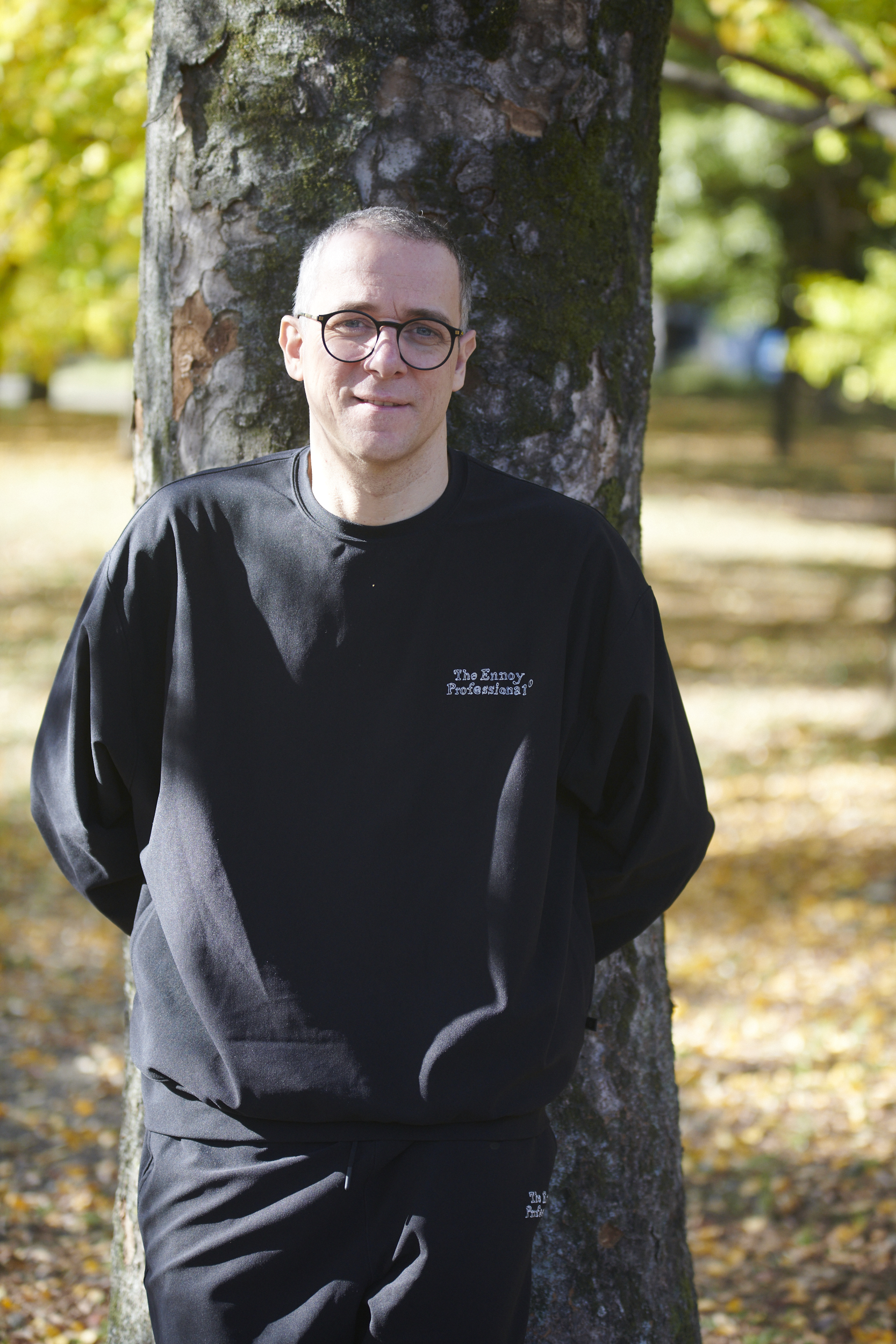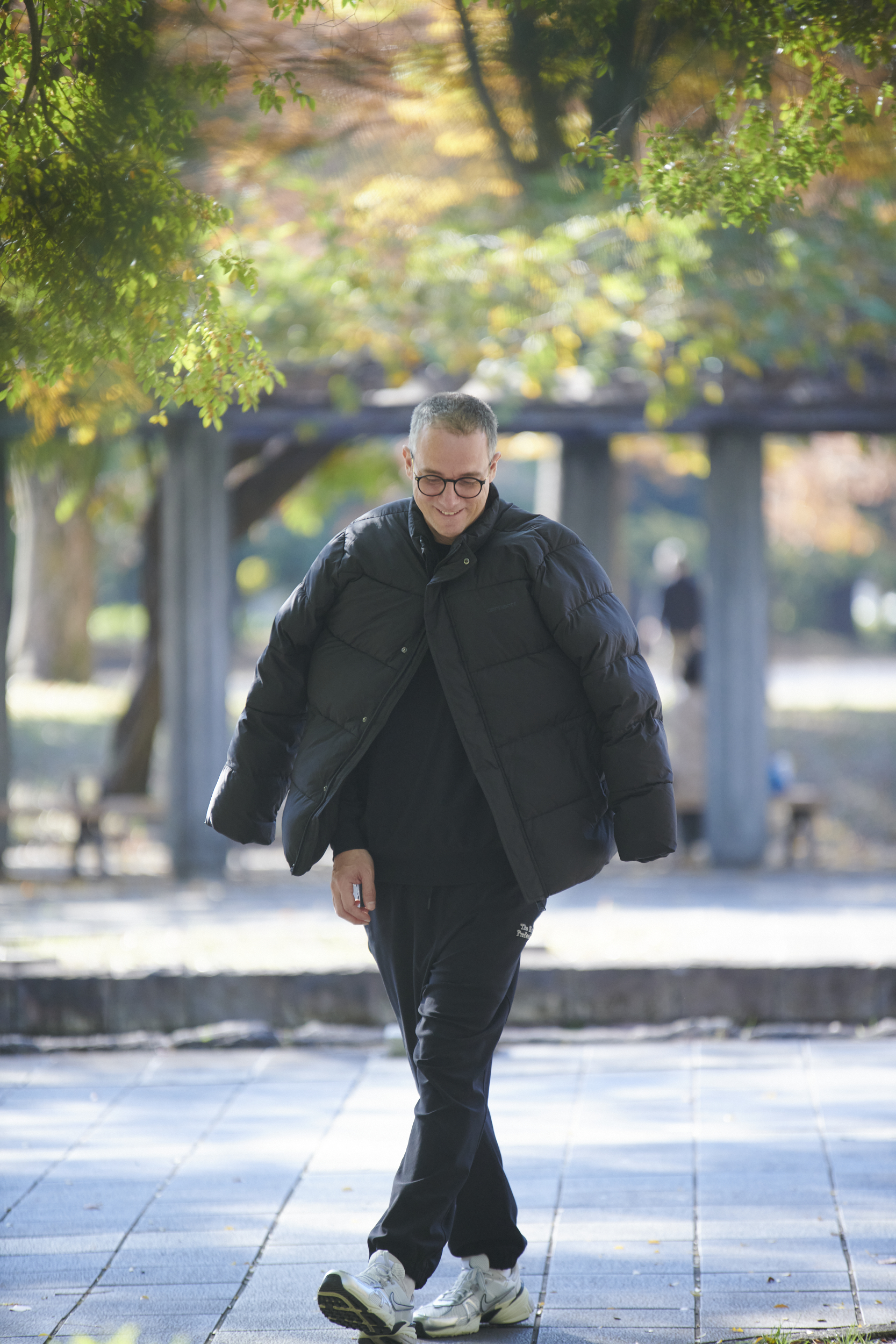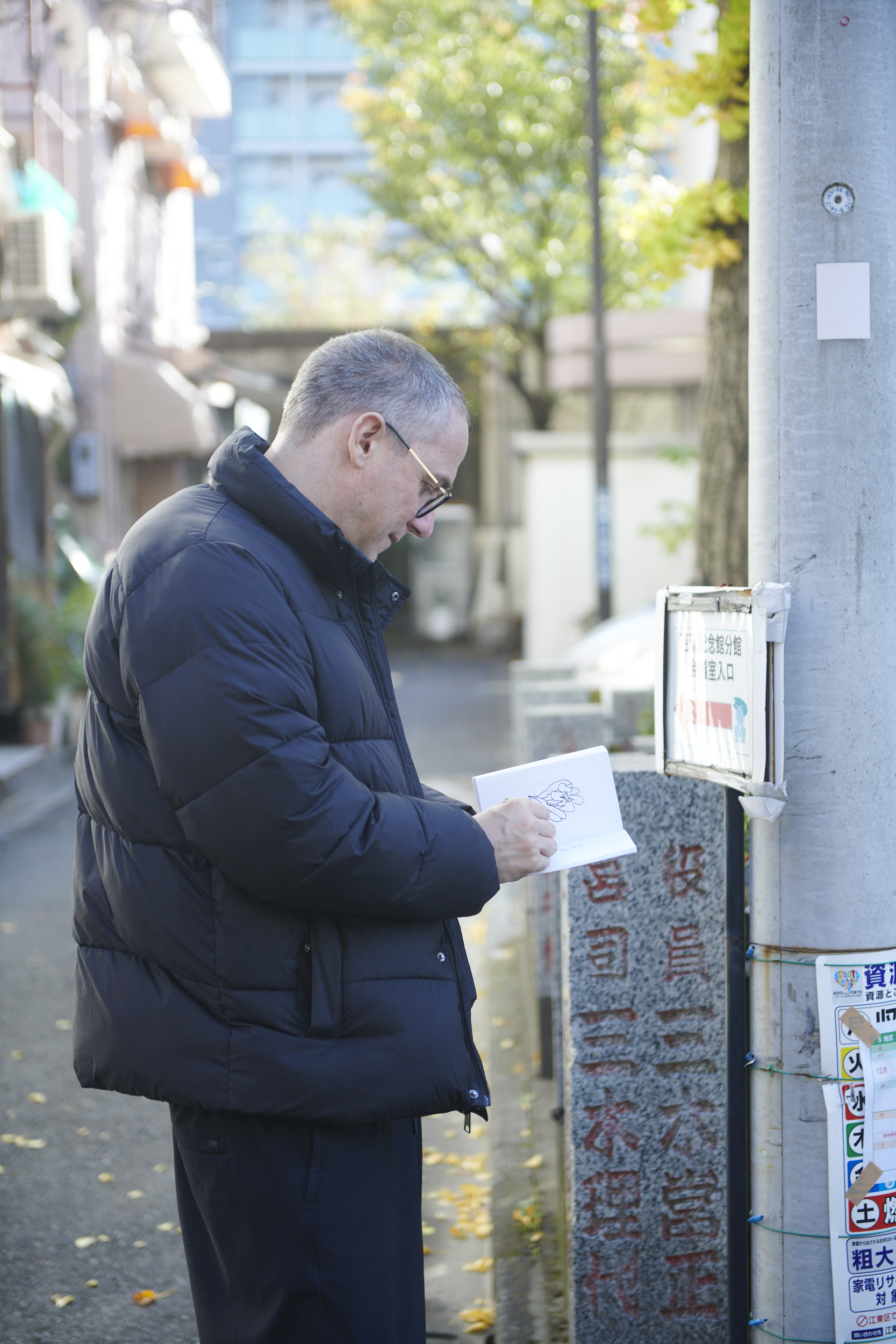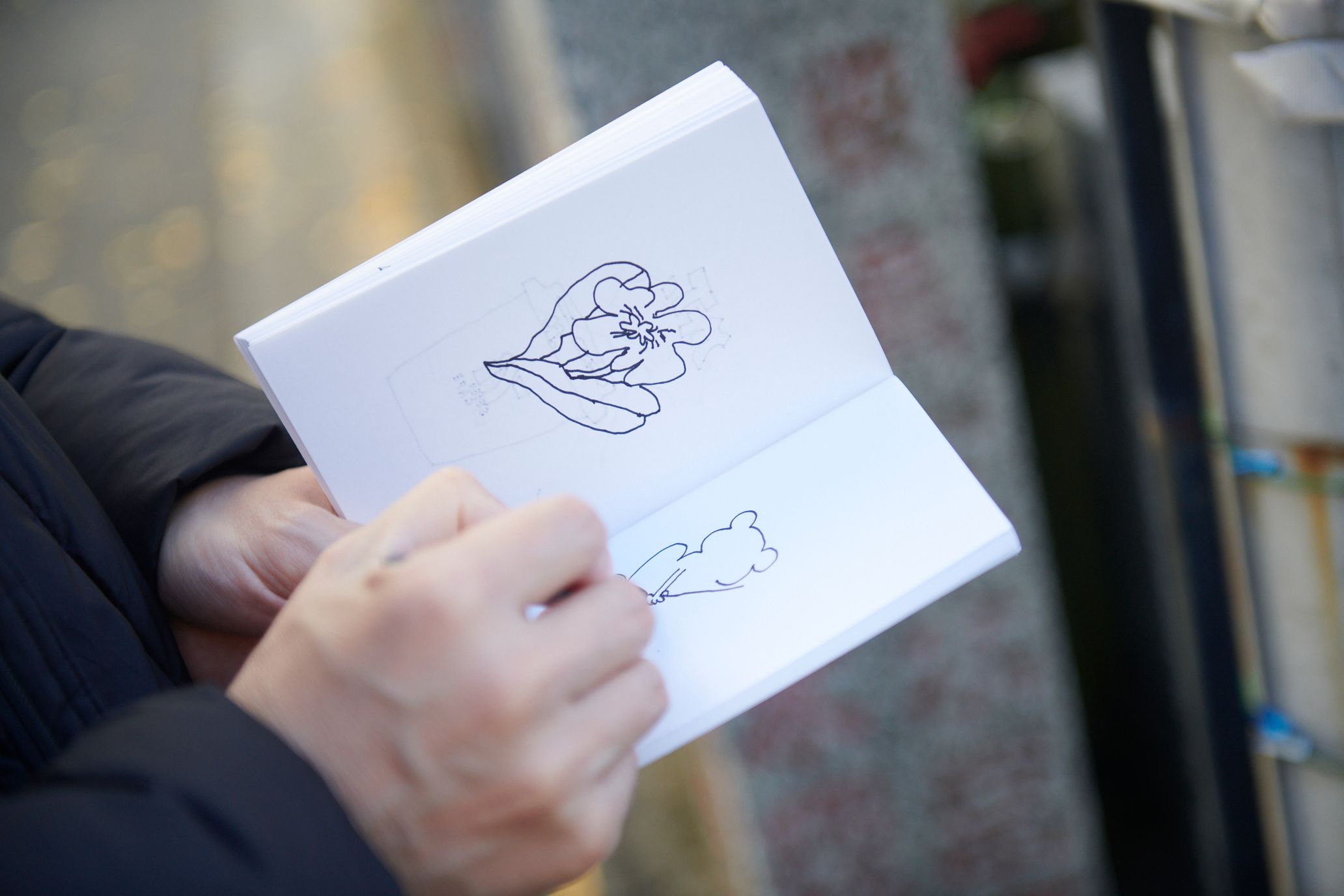
Stefan Marx
Born in 1979 in Germany, Stefan Marx is an artist and illustrator based in Berlin, having relocated from Hamburg. Drawing inspiration from his passions such as drawing, skateboarding, books, and sketchbooks, he showcases his talents across various fields, including publishing art collections, art exhibitions, public art, and designing record jackets. Through his drawings and illustrations, Marx expresses his worldview, philosophy, and indie spirit as a skateboarder, offering a unique perspective on the world. At the age of 15, he founded the independent T-shirt label “Lousy Livin’ Company,” producing high-quality and creative T-shirts in limited quantities. He has also collaborated with numerous brands and companies, ranging from skateboard brands like “MAGENTA SKATEBOARDS” and “5BORO” to larger entities like “IKEA.” Several art books featuring his works have been published by publishers such as Nieves and Dashwood Books.
@stefanmarx
Stefan Marx, an artist based in Berlin, Germany, has been influenced by cultural elements like skateboarding and music since his youth. His love of skateboarding and music from his youth led him to creative activities such as T-shirt and record jacket design, and later to the field of fine art. His typography, characterized by a floating sensation and condensed inspiration, serves as a device that expands the imagination of the viewer, evoking a sense of openness. Marx’s drawings, born from everyday observations and constant practice, exude a gentle, adorable, and comical charm, resonating with a wide audience through their sincere sensibility. Furthermore, when his works are applied to constructive spaces or architectural products, they create impactful suggestions beyond literal meanings, infusing new significance into places and objects. Despite evolving his creativity, Marx maintains his independent stance consistently. In recent years, he has explored collaborations with fashion brands like “Supreme” and “Comme des Garçons,” expanding the possibilities of merging art with commerce. We interviewed Stefan during his visit to Japan. In this first part, we delve into his background, his fascination with street culture, and how he transitioned his overflowing ideas from his youth into label activities, discussing his attitude from the early stages of his career.

Aiming for a Crossroads of Diverse Cultures
–Can you tell us about the background and journey that led you to pursue art?
Stefan Marx(Stefan): I was born in Schwalmstadt, Germany, and grew up in Totzenhausen, a very small town. From a young age, I was interested in art, typography, and graphic design, and later developed an interest in skateboarding culture. Back then, the internet wasn’t widespread, so magazines were the main source of information, but it was quite challenging to find sophisticated magazines in the countryside. In that environment, at the age of 15, I wanted to create clothes for my friends who skateboarded, so I started a T-shirt label called “Lousy Livin’ Company.”
Afterwards, I attended university in Hamburg, where I continued to design T-shirts for my label alongside my studies. I also worked providing graphics for a skateboard company called “CLEPTOMANICX.”
Following my university graduation, I had a pivotal encounter with Karin Guenther, a curator based in Hamburg, which led to the opportunity to exhibit my work in galleries. Alongside my fine art endeavors, I continued my commercial work. It was after creating a catalog for my own label that I started compiling Zines featuring my drawings.
Benjamin from the Swiss publisher Nieves took a liking to one of these Zines, and the following year, we collaborated on a book together. Since then, I’ve been publishing books annually with Nieves.
–How did your interest in art and typography develop in an environment where information was limited during your childhood?
Stefan: There wasn’t any special catalyst, but I’ve always been interested in visual expression since childhood, finding joy and immersion in the act of drawing. I was always drawing something. While I think everyone enjoys drawing as a child, I’ve continued to do so into adulthood; it’s something I’ve never stopped. I simply love to draw.
Drawing allowed me to observe the things around me, absorbing their visual essence, and sharing those images with others. That has been a significant motivation for me, and I believe it’s why I continue to draw to this day.
–Please tell us about the specific activities and goals you had when you established your label “Lousy Livin’ Company” at the age of 15.
Stefan: At that time, American skate brands were popular among my skater friends, but they were too expensive to buy in Germany. So, I decided to start my own label to create alternative options. When I became interested in skateboarding, I also developed an interest in the surrounding culture, including fashion, graphics, and music, which naturally led to an interest in making clothes. I had many ideas about how existing decks and T-shirt designs could be more interesting.
When I started the label, I had no knowledge about how to make items or how to run a business, so I gathered information by asking adults around me. I found a company that could screen print T-shirts, borrowed money from my sister for production costs, and made the first T-shirt.
Since I was running the label alone, I did everything myself, not just designing. I went to wholesale companies for skate shops to sell my T-shirts and even sold them to friends in the schoolyard. I was doing it because I wanted people to see what I had made and was enjoying it. It was all about wanting to see my friends happy.
My friends knew I was working hard to make clothes, so they supported me by wearing my clothes.
As I continued the label’s activities, I realized I wanted not only my skater friends to wear the items but also non-skater friends to understand and appreciate them.
I wanted a broader range of people to be interested. Although I initially started as a skateboarding brand, it eventually grew into a brand worn by many people. I wanted to create a space where various people could intersect through the brand.


Adding Visual Elements to Music, Expanding the Listener’s Imagination
–You’ve been familiar with music since childhood and have designed numerous record jackets. What led you to start working with music?
Stefan: Designing record jackets was a childhood dream of mine. However, when I started my design career, records were transitioning to CDs, and CDs were transitioning to MP3s, so I thought there wouldn’t be opportunities to design record jackets anymore.
Nevertheless, there were still artists in the independent scene releasing analog works, and I happened to get the chance to design the record jacket for Isolée’s “We Are Monster,” which turned out to be a big hit. This led me to handle all the record jacket designs for “Smallville Records,” an underground techno/house label in Hamburg.
Initially, when I started designing for “Smallville Records,” I didn’t think the label would last long, so I approached it with the mindset that designing about five records would be sufficient. However, contrary to my expectations, the records sold well, and the label has been going strong for almost 20 years.
During the pandemic when business was slow, my partner and I decided to establish a company and took over all the rights to “Smallville Records.” Currently, I own 50% of the label’s shares and am involved in its operations.
The design approach at “Smallville Records” is simple: each record jacket consists solely of my artwork on the front, with the musician’s name and credits printed on the back. I believe this innovative approach to jacket design contributed to its success.
–Could you please tell me what you value in the design of record jackets? Are you expanding the image from the content of the music?
Stefan: In designing record jackets, I draw inspiration from Sonic Youth’s approach. They often selected existing artwork by artists like Raymond Pettibon, Mike Kelley, and Gerhard Richter for their album covers, creating a visual connection to their music. I aim to achieve a similar effect, allowing the artwork to expand the listener’s imagination and create various interpretations. While some designs may provoke discomfort, I believe it’s essential to design jackets that enhance the listener’s experience.
When designing, I avoid listening to the music beforehand and instead rely on the title and track names to inspire my designs. I visualize typography and design elements based on these cues. Regarding artist input, I typically present 2-3 design ideas and let the artist choose, preferring not to accommodate specific requests. Sometimes, unrelated artwork I’ve created ends up becoming a record jacket, as I approach jacket design as an extension of my artistic portfolio rather than solely for the record’s sake.
Photography Masashi Ura
Interview Akio Kunisawa
Translation Elie Inoue

